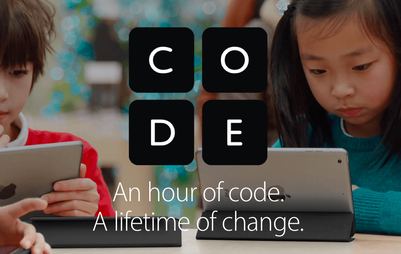What is the difference between Coding and Computer Science?
Coding as a school subject has gained a fair amount of media attention recently, especially with the latest curriculum update in British Columbia. Certain initiatives, such as Hour of Code, have been celebrated for introducing thousands of students to the joys of programming a computer.
|
Coding has also been hailed as an 'essential 21st century skill' by educators and Silicon Valley superstars alike. Clive Thompson, technology journalist and author of Coders: The Making of a New Tribe and the Remaking of the World, explores the many ways that coders have shaped the world we know and live in today.
Sure, politics, law, and business are powerful, but if you want to really remold the contours of society? Write code. |
While this excitement can drive curriculum change and educational funding priorities, both of which open up new opportunities for students to learn how to code, it should be explicitly stated that learning how to code is not equivalent to learning Computer Science (CS). In addition, one-off events like Hour of Code cannot be considered a substitute for carefully designed and delivered courses hosted by instructors who are competent in each unique area of the TPACK model.
So what else is Computer Science (CS) if not just coding? Dr. Michal Armoni provides a broader definition of CS in her paper Looking at Secondary Teacher Preparation Through the Lens of Computer Science from the ACM Transactions on Computing Education:
So what else is Computer Science (CS) if not just coding? Dr. Michal Armoni provides a broader definition of CS in her paper Looking at Secondary Teacher Preparation Through the Lens of Computer Science from the ACM Transactions on Computing Education:
CS is not about computer literacy or computer applications. It is not even just about programming. It is about solving problems and sometimes implementing the solutions in a programming language. It is about analysis of solutions in terms of correctness and efficiency. It is about reasoning on the domain of algorithmic problems, asking questions such as what can be computed, and what can be efficiently computed. It is about abstraction. It is a teaching process that always integrates theory and practice, introducing concepts and ideas and implementing them.
- Dr. Michal Armoni
Therefore, coding should be viewed as a specific set of skills within CS, a limited subset of all that is necessary to work or to do research in the field. What you will learn in Codegogy today does not represent the discipline as a whole but will give you a firm grounding for acquiring a central skill that makes a lot of the abstract and philosophical work of Computer Science possible.
With all that in mind, let's begin the Codegogy session by talking about coding essentials!

